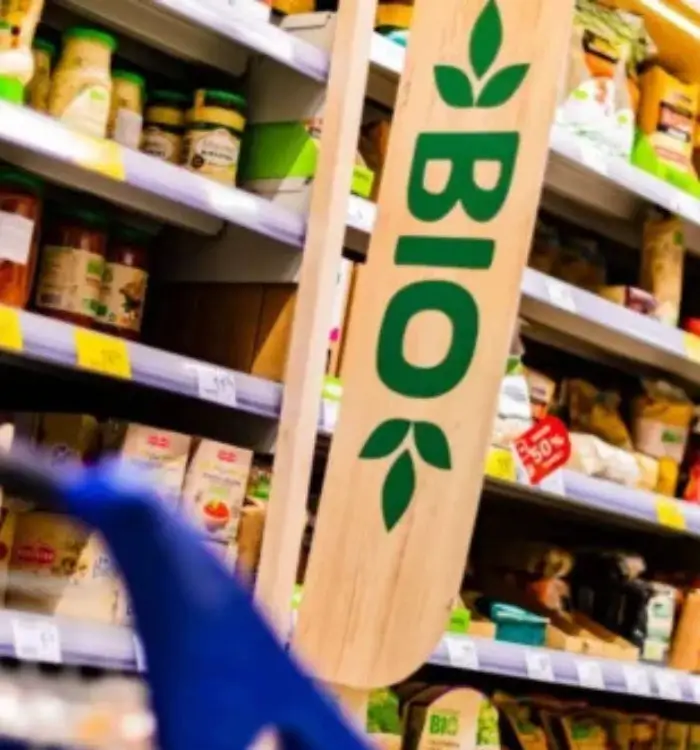Pricing is central to the attractiveness of organic retailers.
When it comes to choosing between an organic product in a specialist store and a comparable product in a supermarket, most consumers make their choice based on price.
If they are inclined to turn to organic products, they are even willing to pay more for a better quality, ethically and/or locally produced organic product… up to a point.
For organic chains, beyond their loyal customer base, the challenge is to assessing the acceptable price differential for consumers compared to their competitors.
Pour fixer des prix cohérents et compétitifs, sans endommager leur image-prix, les enseignes spécialisées en bio s’équipent de solutions de pricing . Elles analysent les prix concurrents et s’appuient sur ces insights pour alimenter leur stratégie de pricing. Dans certaines
In this article, we explore the questions that need to be asked when thinking about prices in organic chains.
What is the competitive scope of organic chains?
Pour élaborer une stratégie de pricing cohérente, la définition du périmètre concurrentiel est toujours l’une des premières questions à se poser. Les acteurs du bio n’échappent pas à la règle.
Before asking yourself how you’re going to set your prices, it’s worth asking yourself against whom you’re going to calculate them. Which competitors operate in the same market as you and sell comparable products?
First response, obvious: other stores specializing in organic products. You sell comparable products based on a whole set of criteria. You attract a similar type of customers who are sensitive to organic products, quality, origin, production conditions, etc. These stores are your direct competitors
Beyond branded networks, stores specialized in organic products or local producer groups can also compete with you. However, in this case, it’s more of a local competition, which will only be considered in a more granular and localized pricing approach.
Finally, large grocery stores, even though they are generalist, also fall within your competitive scope. Not only do they have organic sections, even though their organic range has been reduced, but also, in consumers’ decision-making, choices are made between organic and non-organic products that are comparable.
What criteria should be taken into account when assessing price differences?
The main problem with pricing for organic players is that they have to compare their products with those of general retailers, whose characteristics do not entirely overlap.
Let’s imagine you sell a product that meets a certain number of criteria: organic, French origin, Nutriscore A, etc. To calculate your prices, you compare this product with one that doesn’t tick all the boxes. For example, it is non-organic, of French origin and Nutriscore B.
What percentage discount should you apply to the competitor’s product for your calculation to be accurate?
To answer this question, we must first identify the price variability criteria that influence the customer’s price perception.
In practical terms, this raises the question of how much more a consumer is willing to pay for an organic product made in France than for a non-organic product made in Italy. Except, of course, the more criteria you integrate, the more different combinations you have.
Here are some of the criteria you can include in your benchmarking approach.
Organic certification, ethics and product origin
Organic certification is a pillar of price comparison in the organic sector. A certified organic product justifies a higher price for the consumer.
Similarly, the origin of products plays a role in consumers’ perception of prices. The difference is between French origin and foreign origin. But for certain types of product, local provenance can encourage consumers to pay more.
Composition, quality and production methods
When you want to compare products, you’re also interested in their composition. The nature and quality of the ingredients can justify a price difference.
For example, consumers may be inclined to pay a higher price for an organic spread containing a higher percentage of hazelnuts.
Production methods also influence the perceived value of a product. Here too, consumers may be prepared to pay a higher price for artisanal flour produced by a local miller.
Packaging
The packaging of organic products can also have an impact on their price. A product with recyclable or compostable packaging may be sold at a slightly higher price if the consumer perceives it as adding value.
More obviously, you’re going to compare products according to their packaging, for example by considering the price per kilo.
Why use a pricing solution to assess acceptable price differences?
Today, organic retailers tend to compare themselves in terms of price with the whole of their competitors’ offer, and on the basis of all the criteria they believe influence the value perceived by consumers.
Given the scale of the task, the contribution of a pricing solution is often essential on several levels.
Collect competitor prices
To compare yourself, you need to know your competitors’ prices.
A pricing solution provides you with regularprice statements either via web-based data collection or via point-of-sale surveys.
This ensures that you are constantly benchmarked on the basis of up-to-date data, and that you can follow and react to changes in the prices of competitors you have identified.
Standardize and match competing products
Then, in general, organic chains know the criteria on which they want to compare products, and define discount or premium coefficients.
For example, a certified organic product is overpriced by X% compared to a non-organic product.
But in order to apply these coefficients and calculate a price, we must first identify these characteristics in competitors’ products.
This involves standardization and matching to categorize products according to variability criteria.
A pricing solution like Optimix XPA automates this work. The solution will identify the products to be compared and their characteristics, and propose prices based on the coefficients previously entered.
For the retailer, the challenge lies above all in identifying and weighting the criteria. They have to strike a balance between the customer’s perception of a product and its features, market realities and their price image.
Pricing, the cornerstone of the competitiveness of organic stores.
Pricing in organic chains is a key issue for the performance and sustainability of the chains. It’s all about finding the right balance between the value perceived by the customer, the right price differential he’s willing to accept, and the brand’s profitability.
To do this, organic chains identify criteria that influence perceived value and justify a price differential. They apply discount coefficients to competing products to find a “fair price”.
The complexity of the approach lies in categorizing competing products according to these criteria.
This is where a pricing solution comes into its own.
Not only does it facilitate the collection of competitor prices, but also a contextualized analysis based on the desired criteria and, finally, the calculation of prices by integrating the coefficients established by the brand.
By adopting this approach, organic retailers can better position their products on the market, boost their appeal and build customer loyalty, while preserving their price image.








